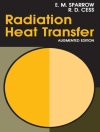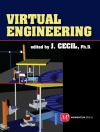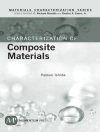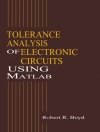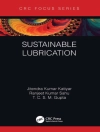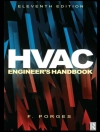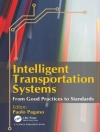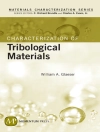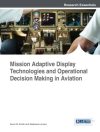This book focuses on several areas of intense topical interest related to applied spectroscopy and the science of nanomaterials. The eleven chapters in the book cover the following areas of interest relating to applied spectroscopy and nanoscience:
· Raman spectroscopic characterization, modeling and simulation studies of carbon nanotubes,
· Characterization of plasma discharges using laser optogalvanic spectroscopy,
· Fluorescence anisotropy in understanding protein conformational disorder and aggregation,
· Nuclear magnetic resonance spectroscopy in nanomedicine,
· Calculation of Van der Waals interactions at the nanoscale,
· Theory and simulation associated with adsorption of gases in nanomaterials,
· Atom-precise metal nanoclusters,
· Plasmonic properties of metallic nanostructures, two-dimensional materials, and their composites,
· Applications of graphene in optoelectronic devices and transistors,
· Role of graphene in organic photovoltaic device technology,
· Applications of nanomaterials in nanomedicine.
Innehållsförteckning
Raman Spectroscopy, Modeling and Simulation Studies of Carbon Nanotubes.- Laser Optogalvanic Spectroscopy and Collisional State Dynamics Associated with Hollow Cathode Discharge Plasmas.- Applications of Fluorescence Anisotropy in Understanding Protein Conformational Disorder and Aggregation.- Nuclear Magnetic Resonance Spectroscopy in Nanomedicine.- An Efficient Coupled Dipole Method for the accurate calculation of van der Waals interactions at the nanoscale.- Adsorption of Gases in Nanomaterials: Theory and Simulations.- Atom‐Precise Metal Nanoclusters.- Plasmonic Properties of Metallic Nanostructures, Two Dimensional Materials, and Their Composites.- Application of Graphene within Optoelectronic Devices and Transistor.- The Versatile Role of Graphene in Organic Photovoltaic Device Technology.- Nanomaterials in Nanomedicine.
Om författaren
Dr. Prabhakar Misra received his Ph.D. from The Ohio State University in 1986. After a post-doctoral fellowship at the Laser Spectroscopy Facility of The Ohio State University, he joined Howard University in Washington, DC. He was a Visiting Scholar in 1990 at Northwestern University in Evanston, IL. He is currently a Professor of Physics and Director of the Laser Spectroscopy Laboratory at Howard University. He has served as Chair of the Department of Physics & Astronomy (2010-14) and the President of the Howard University Chapter of Sigma Xi, the Scientific Research Society (2013-14). Dr. Misra has been involved in basic and applied spectroscopic research that spans more than 25 years in the field of atomic and molecular physics and has contributed extensively to the spectroscopic characterization of stable and unstable molecular species, which have included free radicals and ions that impact combustion and plasma processes. He has served as co-editor of the book titled Ultraviolet Spectroscopy and UV Lasers (Marcel Dekker/CRC Press, 2002) and the research monograph Fundamentals & Current Topics in Molecular Structure Research (Research Signpost, 2011). He is a Visiting Scientist at the NASA Goddard Space Flight Center, Greenbelt, MD, where he has been involved in the development of an extensive database and spectral library of organic molecules for the Curiosity rover, which has relevance to the search for life on planets such as Mars. His current research interests involve the detailed characterization of a variety of nanomaterials (e.g. graphene, carbon nanotubes and metal oxides) using Raman Spectroscopy and Molecular Dynamics Simulations. Dr. Misra has been a recipient of the NASA Administrator’s Fellowship Program (NAFP) award, an NRC faculty fellowship at the Aeronautics and Space Engineering Board of the National Academy of Sciences in Washington, DC, andthe Fulbright Scholar award. He is a Senior Member of the Optical Society of America and a Fellow of the American Society for Laser Medicine and Surgery.


